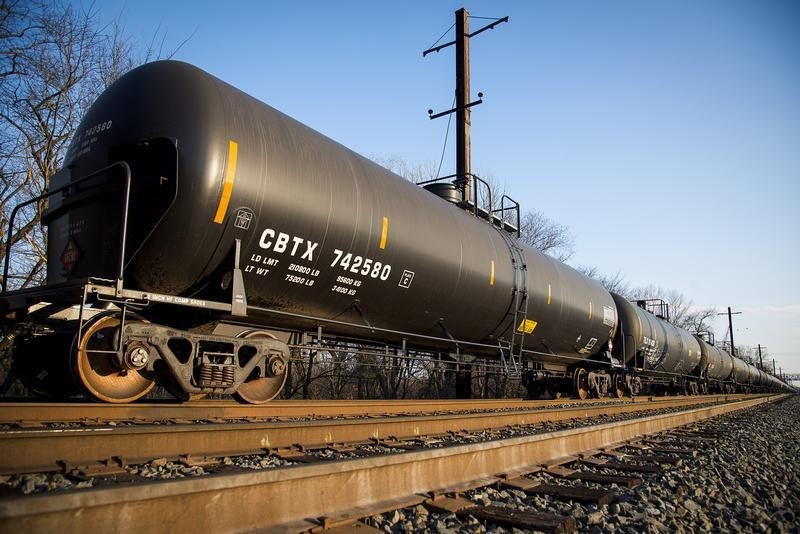Investing.com - Oil prices turned higher in North American hours on Wednesday, reversing earlier losses which took futures to a four-week low, after data showed that crude supplies in the U.S. fell unexpectedly last week.
Crude oil for December delivery on the New York Mercantile Exchange inched up 10 cents, or 0.2%, to $50.06 a barrel by 10:36AM ET (14:36GMT). Prices were at around $48.90 prior to the release of the inventory data. The contract fell to a session low of $48.88 earlier, a level not seen since October 4.
The U.S. Energy Information Administration said in its weekly report that crude oil inventories fell by 553,000 barrels in the week ended October 21. Market analysts' expected a crude-stock gain of 1.69 million barrels, while the American Petroleum Institute late Tuesday reported a supply increase of 4.8 million barrels.
Supplies at Cushing, Oklahoma, the key delivery point for Nymex crude, declined by 1.337 million barrels last week, the EIA said.
Total U.S. crude oil inventories stood at 468.2 million barrels as of last week, which the EIA considered to be “historically high levels for this time of year”.
The report also showed that gasoline inventories decreased by 1.956 million barrels, compared to expectations for a decline of 963,000 barrels.
For distillate inventories including diesel, the EIA reported a drop of 3.354 million barrels.
Elsewhere, Brent oil for December delivery on the ICE Futures Exchange in London dipped 12 cents, or 0.22%, to $50.65 a barrel.
The contract slumped to $49.70 earlier, the lowest since October 3, amid fading expectations of a coordinated production cut among major global oil producers.
Oil futures have been under pressure in recent days amid market skepticism over the implementation of a planned deal by OPEC to limit production.
The 14-member oil group reached an agreement to cap output to a range of 32.5 million to 33.0 million barrels per day in talks held on the sidelines of an energy conference in Algeria late last month.
However, OPEC said it won’t finalize details on individual output quotas until its next official meeting in Vienna on November 30.
In September, the group’s production reached 33.4 million barrels a day.
The possibility that producers could walk away empty-handed from the upcoming meeting looms large after Iraq, Iran, Nigeria and Libya all signaled they might not take part in the proposed production cut deal. Russia’s unclear stance is also fueling uncertainty.
